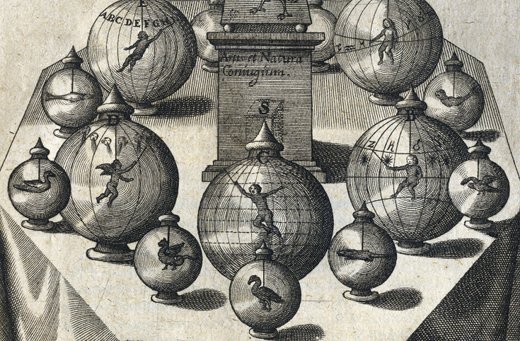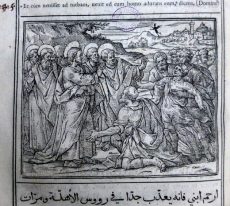- About
- Visiting
- What’s On
- Venue hire
- Catalogues
- Collections
- 101 Treasures of Chetham’s
- Digital Resources
- The Flowers of Histories
- A Book of Hours from France
- The Manchester Scrapbook
- Thomas Barritt of Manchester
- Art Treasures Examiner of 1857
- Manchester Association for Constitutional Order
- The North Western Museum of Science and Industry: Some Reminiscences by Richard Hills
- Criminal Manchester
- The Cup of Destiny
- Athenaeum Souvenir
- Middle English Manuscripts
- Manchester and Liverpool of Today
- Hollingworth’s Mancuniensis
- Memoir of Cecil Wray
- William Seward’s Diary
- The Anti-Monopolist
- Fishwick’s History of Rochdale
- Knyvett’s Defence of this Realm
- Tractatus de Nigromantia
- Axon Ballads
- Printed Books & Ephemera
- Archives & Manuscripts
- Prints and Photographs
- Blog
- Support us
Works of Athanasius Kircher

The Library holds a significant collection of works by the German Jesuit scholar Athanasius Kircher (1602 – 1680), whose extraordinarily wide range of interests made him one of the most important seventeenth-century European polymaths.
Born in Hesse, Germany, Kircher, who was the youngest of nine children, spent most of his life in Rome, where he joined the priesthood in 1628. Sometimes compared to Leonardo da Vinci, and described by Edward W. Schmidt as the ‘last Renaissance man’, Kircher published lavishly illustrated works on an enormous range of subjects including mathematics, Egyptology, geology, music theory and numerous branches of science, and was even the inventor a universal language scheme. He was the first scientist to be able to support himself through the sale of his own books.

Throughout his life Kircher corresponded with other scientists, physicians and fellow Jesuits, and had his own museum, advertised as a ‘theatre of nature and art’, for which the published catalogue gave descriptions of perpetual-motion machines, optical tricks, a mermaid’s tail, a giant’s bones and other marvels.
The extent of the collection of Kircher’s works held at the Library reflects both the extraordinary breadth of his scholarship and the Library’s commitment to covering the known field of human endeavour.
For more about the work of Kircher, may we recommend the excellent work Athanasius Kircher: the last man who knew everything, edited by Paula Findlen and published by Routledge, 2004.


